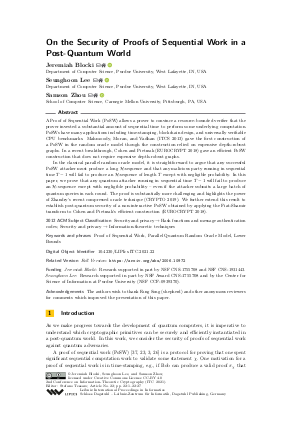LIPIcs.ITC.2021.22.pdf
- Filesize: 0.96 MB
- 27 pages

 Creative Commons Attribution 4.0 International license
Creative Commons Attribution 4.0 International license

















Feedback for Dagstuhl Publishing